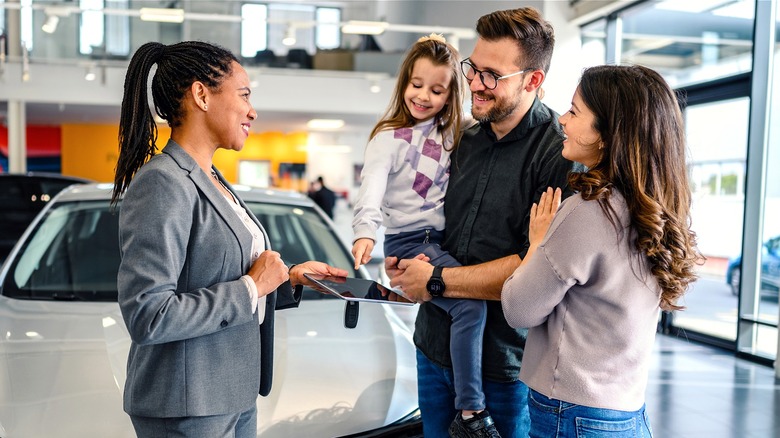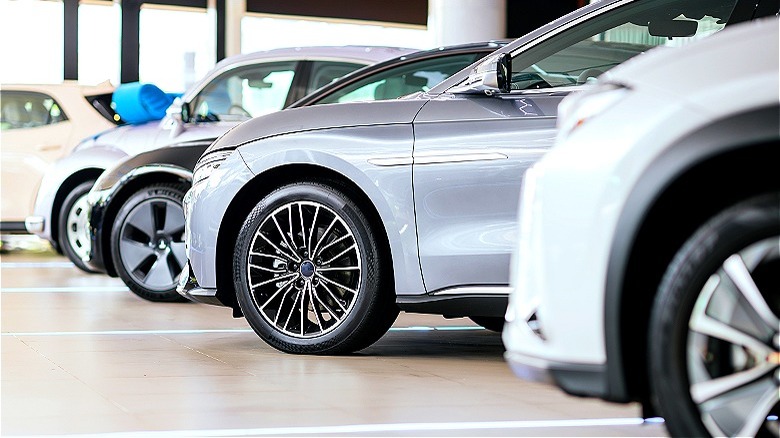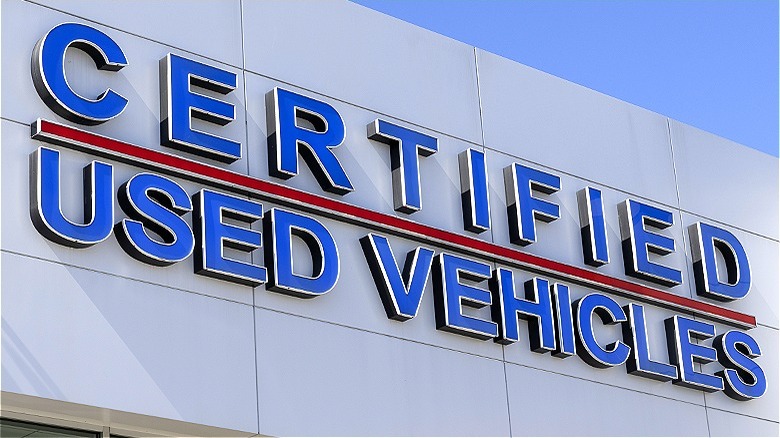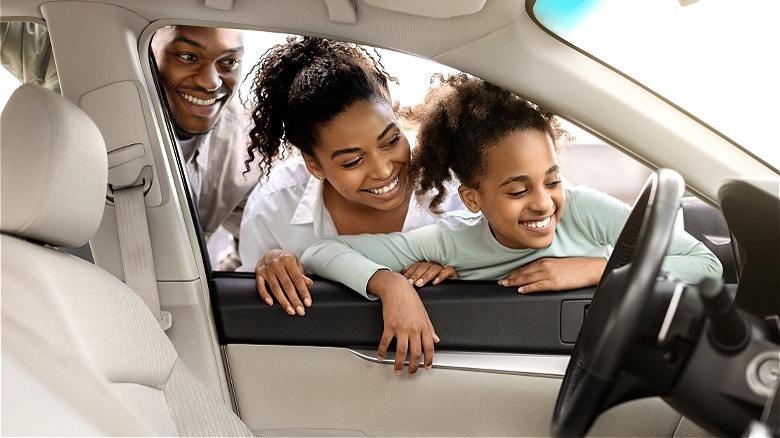Car Shopping Guide: When To Buy New, Buy Used, Or Lease
Money Digest has often recommended buying a good quality used vehicle rather than purchasing a brand-new car. To be fair, that's hardly a groundbreaking sentiment. Personal finance experts, such as Dave Ramsey, Suze Orman, and even legendary investor Warren Buffett, all advocate being frugal with regard to your choice of vehicle. Indeed, used cars are typically less expensive to buy overall and they depreciate more slowly than brand-new cars because the used car's first owner will have absorbed the biggest loss of value.
That said, there are a certain few justifications for buying brand new. To begin, you're relatively assured the vehicle will be reliable and trouble-free, with no hidden flaws. As well, you'll be getting the very latest in safety and technology. Finally, auto loan interest rates will likely be lower for new cars versus used, and manufacturers may offer special promotional rates on certain car models to stimulate sales volume.
To further complicate your vehicular conundrum, though, besides buying new or used, the option also exists to lease a car. For full details on the pros and cons of leasing, you can educate yourself on how exactly car leases work. However, the Reader's Digest version is that a lease allows consumers to drive a vehicle for a certain amount of time and mileage, and only make payments based on that usage. You don't actually take ownership of the car. At the end of a lease, the vehicle is typically returned to the leasing company.
Buying new can sometimes make sense
If all of those factors outlined in the introduction seem complex, it's because they are. Like with so many of life's decisions, there's seldom a one-size-fits-all approach to acquiring a new — or new to you — vehicle. As part of Money Digest's recent exclusive interview with Lawrence Sprung, CFP, we asked if Mr. Sprung had a preference regarding how to best fulfill his family's car needs. Sprung, who's the founder of Mitlin Financial and author of the book "Financial Planning Made Personal," said, "The decision-making process depends a lot on the situation at the time and our family's needs. Many people stick to one method, either always buying new cars, used cars, or always leasing. However, I strongly recommend that each time you need a car, you consider all your options."
Indeed, sometimes buying a new car may be the best option, even if it means bucking traditional personal finance advice. That's particularly true if manufacturers are offering large rebates or special low-interest rate financing on a particular model you're interested in. New car dealerships may also hold aggressive sales at the end of the month, end of the year, or around holiday weekends, like Memorial Day or Labor Day, when aggressive discounts are available.
A used car is probably your best bet
While buying a new car may occasionally seem more prudent, buying a used car still represents a better value in most circumstances. Especially if you can purchase a lightly driven example that has the same outward appearance and features as the latest model. New cars, as said, depreciate in value approximately 20% during the first year of ownership, then 10% every year after that until around the fifth year. By that age, values begin to stabilize.
A good place to begin your used car search may be vehicles that recently ended a lease. Car leases are typically two to four years in duration, so the car won't be too old. Further, most leases limit the allowable mileage to 10,000 to 15,000 miles per year, so you won't be buying a car with a million miles on the odometer. Better still, most automakers offer some sort of certified pre-owned (CPO) program to promote their off-lease vehicles. Besides a comprehensive inspection, a CPO vehicle will come with an extended warranty that's potentially valid for seven years or more from the date when the vehicle was originally sold or leased.
CPO policies vary between manufacturers, so you'll want to double check regarding warranty coverage. However, consumers should note that even non-CPO late-model used cars will likely have a power train warranty of at least five years or 60,000 miles from when new. That protects major components like the engine and transmission even if the bumper-to-bumper warranty is expired. That's a real confidence booster for purchasing a 2- to 3-year-old vehicle.
Leasing a car requires less money
Finally, let's take a look at auto leasing as an alternative to buying a car new or used. Leasing can be attractive in some circumstances because you don't need to save up a large down payment. Likewise, the monthly payments are lower than buying a car since you're only paying for the use of the car for the duration of the lease. For example, if a $50,000 car is estimated to be worth $35,000 at the end of a three-year lease, you'll be paying $15,000 plus tax and interest, divided by 36 monthly payments. That's much lower than the payments to buy a $50,000 car.
Leasing a car allows consumers to drive a more premium, newer vehicle than they might otherwise have access to. As well, leases can be appropriate for drivers who like to perpetually drive a new car and/or sample different makes, models, and colors. If there's a downside to continually leasing, it's that you'll be in a forever-payment trap without ever actually owning anything. Yet, having access to a vehicle is a necessary evil that's going to cost you one way or another, whether it's lease payments, depreciation, or repairing an older car. A lease is just one approach.
In summary, we'll once again defer to CFP Lawrence Sprung, who advised, "Evaluate the total cost of buying new, buying used, or leasing, and then make your decision with all the information. I don't think one method is always better than the others; it depends on your specific circumstances at the time in which you are acquiring the vehicle."



